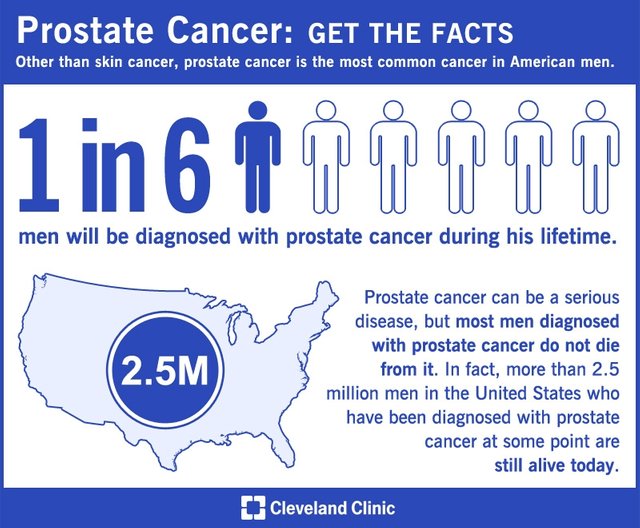Tall and obese men at increased risk of aggressive prostate cancer.

A study published in the open access journal BMC Medicine states that men who are tall and obese are at a higher risk of high-grade prostate cancer and prostate cancer death.
According to the team of researchers from the University of Oxford, height was not associated with the overall prostate cancer risk, but, with the addition of every 10 cm (3.9 inches) of height, the risk being diagnosed with aggressive prostate cancer and then death caused due to the disease increases by 21% and 17% respectively.
A study published in the open access journal BMC Medicine states that men who are tall and obese are at a higher risk of high-grade prostate cancer and prostate cancer death.
According to the team of researchers from the University of Oxford, height was not associated with the overall prostate cancer risk, but, with the addition of every 10 cm (3.9 inches) of height, the risk being diagnosed with aggressive prostate cancer and then death caused due to the disease increases by 21% and 17% respectively.
Waist circumference is considered as a more accurate measure of obesity in older adults than BMI, and the study found that with every increase of 10 cm of the waist circumference, there was a 13% increased risk of high-grade cancer and 18% greater risk of death from prostate cancer.
The lead author of the study, Dr. Aurora Perez-Cornago, hopes that the association of taller men and increased prostate cancer risk found in their results will provide an insight into the underlying mechanism of prostate cancer development, for example early nutrition and growth.
In their findings, they also observed that a healthy body weight was linked to a decreased risk in death caused by prostate cancer and diagnosis of high-grade prostate cancer. This lead Dr Perez-Cornago to believe that the relationship between obesity and a higher rate of aggressive prostate cancer in men, seen in the study, could be caused by alterations in their hormone levels. However, he notes that differences in prostate cancer detection could also be contributing to the results seen.
Data from the European Prospective Investigation into Cancer and Nutrition (EPIC) which is a prospective European cohort with 141,896 men from 8 different countries (Denmark, Italy, the Netherlands, Spain, Sweden, the UK, Germany, and Greece) were used in the study. Details of 7,024 incident prostate cancers, 726 high-grade and 1,388 advanced-stage prostate cancers, and 934 prostate cancer deaths were included in the data.
